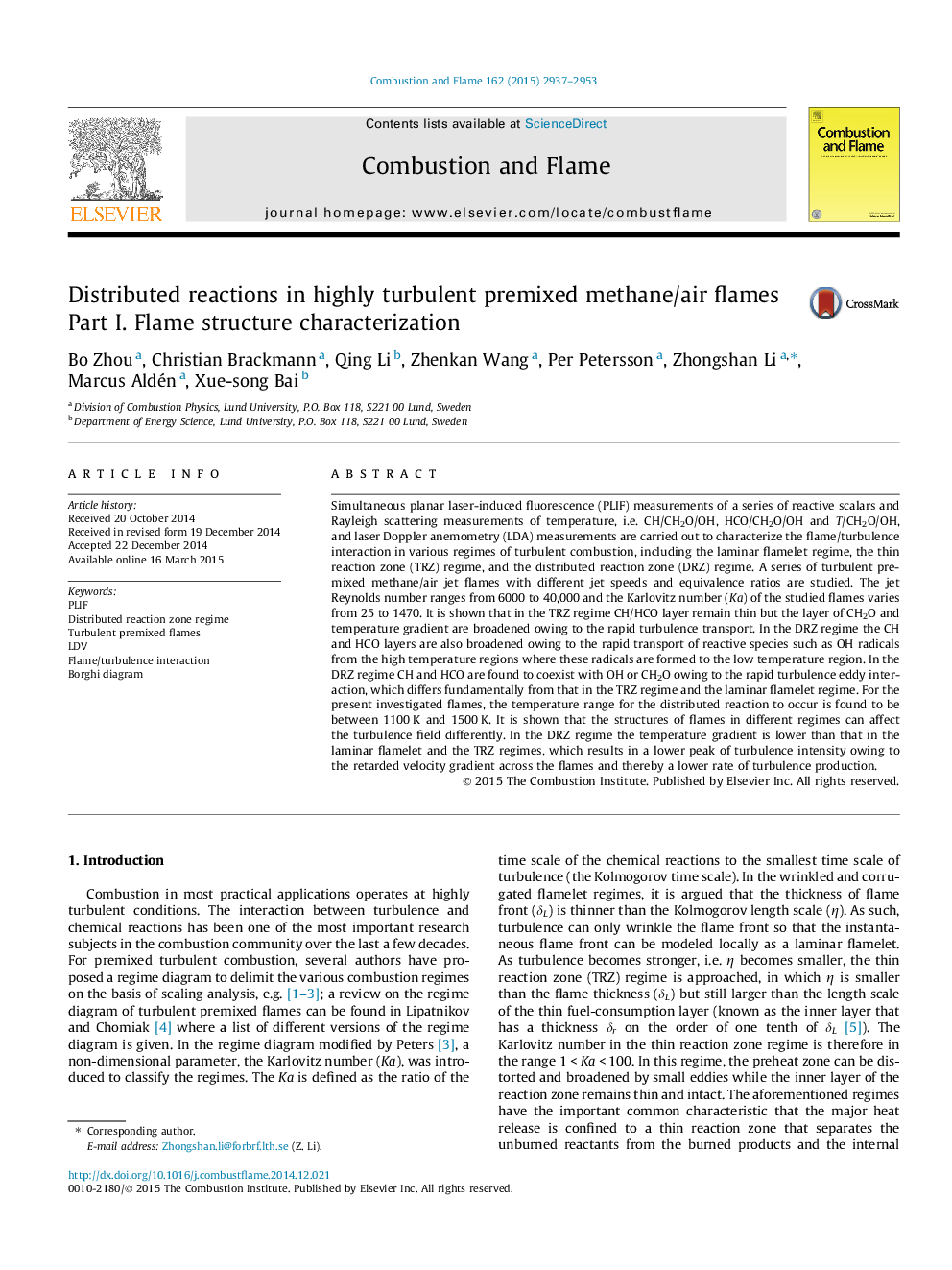| کد مقاله | کد نشریه | سال انتشار | مقاله انگلیسی | نسخه تمام متن |
|---|---|---|---|---|
| 166262 | 457747 | 2015 | 17 صفحه PDF | دانلود رایگان |
Simultaneous planar laser-induced fluorescence (PLIF) measurements of a series of reactive scalars and Rayleigh scattering measurements of temperature, i.e. CH/CH2O/OH, HCO/CH2O/OH and T/CH2O/OH, and laser Doppler anemometry (LDA) measurements are carried out to characterize the flame/turbulence interaction in various regimes of turbulent combustion, including the laminar flamelet regime, the thin reaction zone (TRZ) regime, and the distributed reaction zone (DRZ) regime. A series of turbulent premixed methane/air jet flames with different jet speeds and equivalence ratios are studied. The jet Reynolds number ranges from 6000 to 40,000 and the Karlovitz number (Ka) of the studied flames varies from 25 to 1470. It is shown that in the TRZ regime CH/HCO layer remain thin but the layer of CH2O and temperature gradient are broadened owing to the rapid turbulence transport. In the DRZ regime the CH and HCO layers are also broadened owing to the rapid transport of reactive species such as OH radicals from the high temperature regions where these radicals are formed to the low temperature region. In the DRZ regime CH and HCO are found to coexist with OH or CH2O owing to the rapid turbulence eddy interaction, which differs fundamentally from that in the TRZ regime and the laminar flamelet regime. For the present investigated flames, the temperature range for the distributed reaction to occur is found to be between 1100 K and 1500 K. It is shown that the structures of flames in different regimes can affect the turbulence field differently. In the DRZ regime the temperature gradient is lower than that in the laminar flamelet and the TRZ regimes, which results in a lower peak of turbulence intensity owing to the retarded velocity gradient across the flames and thereby a lower rate of turbulence production.
Journal: Combustion and Flame - Volume 162, Issue 7, July 2015, Pages 2937–2953
